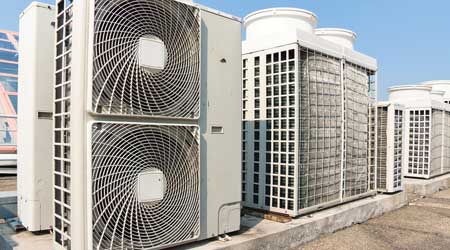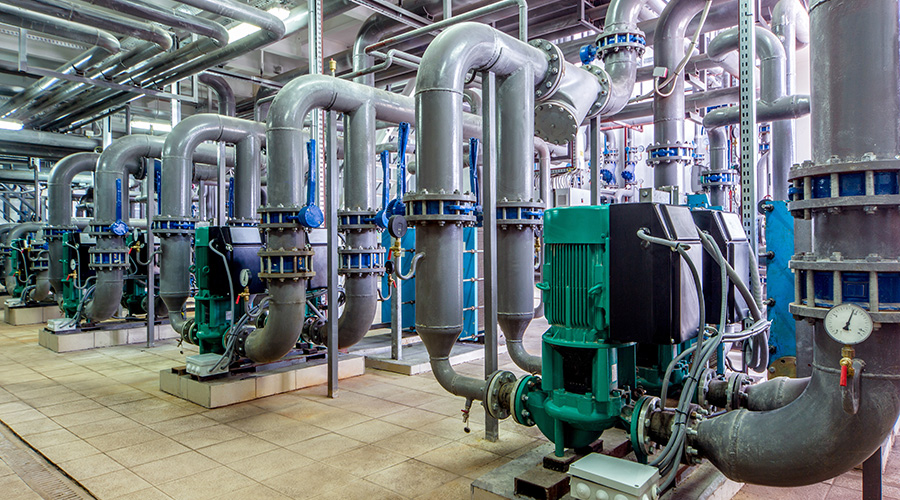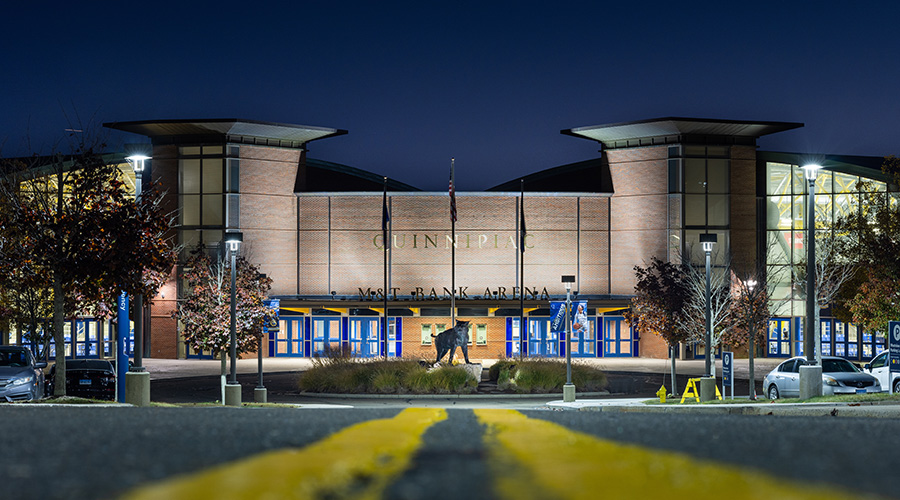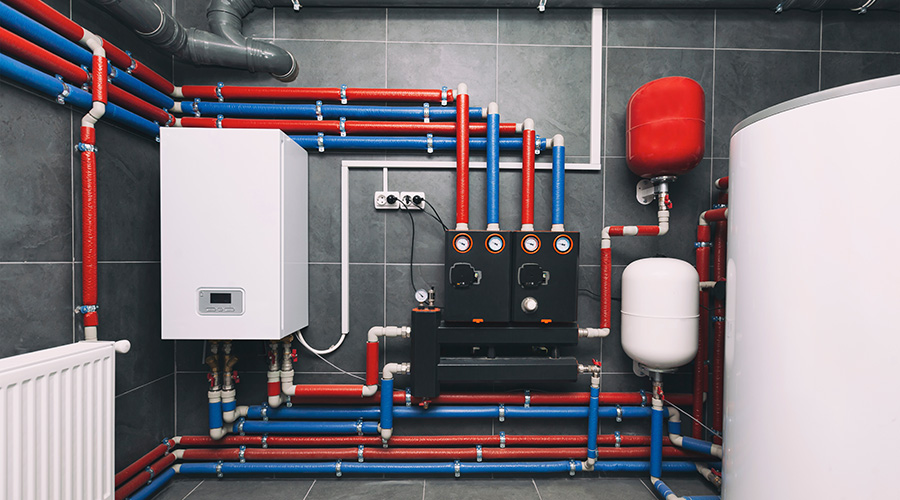 VRF condensing units can be installed wherever there is space — inside or outside of a building.
VRF condensing units can be installed wherever there is space — inside or outside of a building.Understand the Pros and Cons of VRFs for Trading Floors
Weigh the benefits vs the potential high costs and code limitations of VRF installation to determine if a VRF is right for your trading floor space.
VRFs for a trading floor have pros and cons that deserve careful consideration. Possibly the greatest benefit of a VRF for a trading floor is its ability to deliver supplemental cooling with minor infrastructure changes/additions. VRF systems eliminate the need for additional chillers and therefore additional water risers installed up and down the building. Instead, VRF systems use refrigerant to heat or cool a space. Refrigerant requires significantly smaller piping compared to water and therefore is easier to add to existing infrastructure.
VRF systems require a condensing unit to work, but these units can be installed wherever there’s space. Some facilities — especially those in major cities where it’s hard to find outdoor space — will carve out a small mechanical room to house water-cooled VRF condensing units inside the facility and connect them to base building mechanical infrastructure. Others will install air-cooled VRF condensing units outside on a roof or on the ground next to the facility. When this is the case, be careful to consider manufacturer limitations on vertical runs of refrigerant piping.
Similarly, VRF cassettes, or the evaporative units in each heating/cooling zone delivering the additional conditioning to the space, come in a variety of shapes and sizes. Typically much smaller than a water-cooled DX unit with the same conditioning capability, the VRF cassette is available in ducted and non-ducted styles and in various tonnages. It can fit into a ceiling tile or be ducted to ceiling diffusers, which make them invisible from the space. Some VRF cassettes can be connected back to the same condensing unit, offering significant flexibility.
Another plus for using a VRF system to cool a trading floor is part-load operation. Since the base building system is still providing the majority of the space’s heating/cooling, the VRF conditioning doesn’t need to work at full blast all the time.
Both heat pump and heat recovery VRF systems facilitate partial load use. Typically, VRF units are equipped with variable speed compressors to allow for high turndown ratios and stable operation at partial load. In addition, the evaporator units can be built with variable speed fan motors. By varying both refrigerant flow and fan speed, the VRF system can provide true variable capacity, and can efficiently react to changing loads throughout the day.
An additional plus is redundancy. Often, in order to have cooling capacity redundancy at a base-building-system level, a full additional chiller is required. When a VRF system is tasked with supplementary cooling, consider a second condensing unit for added redundancy. Should there be a power outage and the base building cooling system shuts down, a generator-powered condensing unit can provide the coverage necessary to assume the emergency heating/cooling required to keep the trading floor up and running until base building infrastructure comes back on.
A final plus is the potential for future expansion. The heat recovery VRF is a “plug-and-play” system, allowing facility managers to add another VRF evaporator into the same condensing unit to easily expand the system’s reach. The heat pump VRF doesn’t facilitate changes in infrastructure as easily, but changes can be accomplished.
As with any technological innovation, VRF systems have a few cons that require attention prior to specification. These include high installation costs. A VRF can cost anywhere from 10 to 15 percent more than a traditional HVAC system. This can be an inhibitor for many budget-sensitive projects. However, a cost-benefit analysis should be performed which takes into account energy and operational savings over time, as some estimate that VRFs can reduce operational HVAC costs by as much as 30 percent.
There are also code limitations on refrigerant to consider. ASHRAE Standard 15 provides a limit for concentration of refrigerant in occupied spaces. This is often only an issue where small rooms or offices utilize a VRF system. A typical trading floor, which is primarily open floor space, shouldn’t have this problem.
R-410A refrigerant requires 100 cubic feet of occupied space per pound of refrigerant in order to meet the required dilution. Consider 26 pounds of refrigerant for a 20-ton VRF condensing unit. In this case, the smallest allowable room size served by a single evaporator would be 217 square feet with 12-foot deck-to-deck height, assuming the return is a non-ducted, plenum return.
Where non-connected spaces or private offices exist on a trading floor using a VRF system, maintaining the 100 cubic feet of occupied space per pound of R-410A refrigerant will be critical to maintaining safe indoor conditions, in case of a refrigerant leak. For offices where the walls do not entirely reach the ceiling and other semi-private areas, the design engineer should speak with the authority having jurisdiction prior to finalizing VRF design. Make sure to reference local code based on the specific refrigerant being used.
When the time is right
The ideal time to consider VRF installation for a trading floor is during design fit-out. A first step is evaluating whether a VRF system will be both economical and physically possible in the space. Second, have a design engineer knowledgeable of VRF systems map out the installation. Consider local code requirements, how to reach space efficiency goals best, and whether redundancy is a factor.
Greg Ewing (gewing@esdglobal.com), PE, is a mechanical engineer for Environmental Systems Design, Inc., Chicago.
Related Topics:














